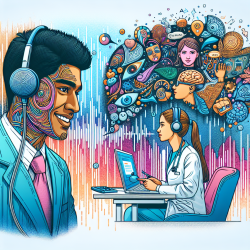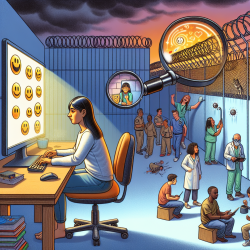Introduction
Empathy is a cornerstone of effective speech-language pathology, especially when working with children. Recent research, such as the study "Reconsidering Empathy: An Interpersonal Approach and Participatory Arts in the Medical Humanities," highlights innovative ways to enhance empathy through participatory arts. This blog explores how speech-language pathologists can apply these findings to improve therapeutic outcomes for children.
Understanding the Research
The study argues that empathy should not be viewed merely as an individual trait but as an interpersonal skill that can be enhanced through participatory arts. The research involved a program where health professional students and patients collaborated to create original songs. This approach fostered reciprocal relationships, community interactions, joint goals, and varied collaboration, leading to enhanced empathic attitudes among participants.
Applying Participatory Arts in Speech-Language Pathology
Speech-language pathologists can incorporate participatory arts into their practice by:
- Collaborative Storytelling: Encourage children to create stories with peers, enhancing communication skills and empathy through shared narratives.
- Music Therapy: Use music-making activities to promote social interaction and emotional expression, fostering a sense of community and empathy among children.
- Art Projects: Engage children in group art projects where they can express themselves and understand others' perspectives through creative collaboration.
Benefits of Participatory Arts
Integrating participatory arts into speech-language pathology offers several benefits:
- Enhanced Communication Skills: Children learn to express themselves and understand others, improving their overall communication abilities.
- Increased Empathy: By engaging in shared creative activities, children develop a deeper understanding of others' emotions and perspectives.
- Stronger Social Bonds: Participatory arts foster a sense of community and collaboration, helping children build meaningful relationships.
Encouraging Further Research
While the study provides valuable insights, further research is needed to explore the full potential of participatory arts in speech-language pathology. Practitioners are encouraged to experiment with these approaches and contribute to the growing body of evidence supporting their effectiveness.
Conclusion
By integrating participatory arts into speech-language pathology, practitioners can enhance empathy and improve outcomes for children. This approach not only enriches therapy sessions but also fosters a more compassionate and understanding environment for young learners.
To read the original research paper, please follow this link: Reconsidering Empathy: An Interpersonal Approach and Participatory Arts in the Medical Humanities.










